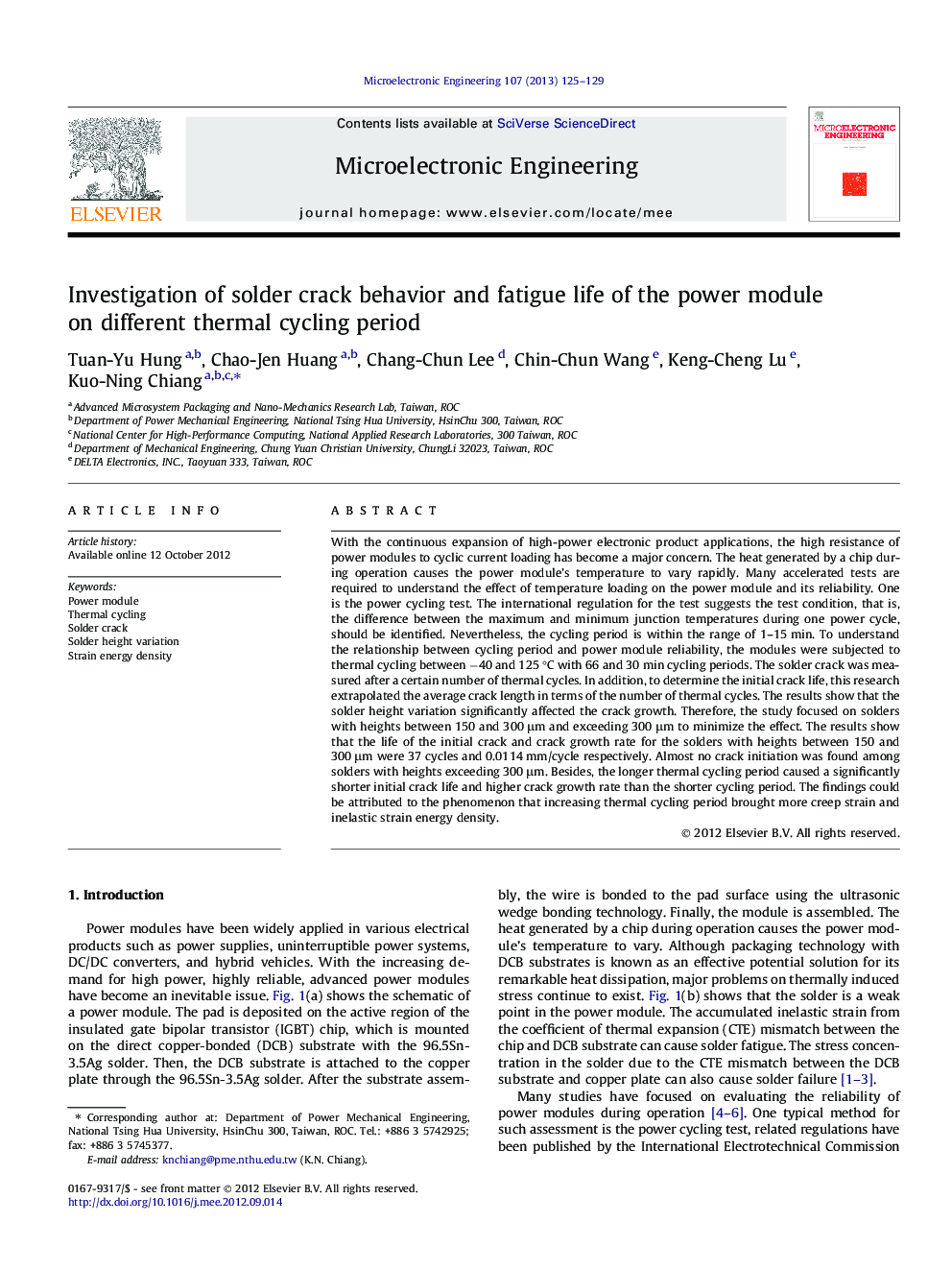| کد مقاله | کد نشریه | سال انتشار | مقاله انگلیسی | نسخه تمام متن |
|---|---|---|---|---|
| 539253 | 1450374 | 2013 | 5 صفحه PDF | دانلود رایگان |

With the continuous expansion of high-power electronic product applications, the high resistance of power modules to cyclic current loading has become a major concern. The heat generated by a chip during operation causes the power module’s temperature to vary rapidly. Many accelerated tests are required to understand the effect of temperature loading on the power module and its reliability. One is the power cycling test. The international regulation for the test suggests the test condition, that is, the difference between the maximum and minimum junction temperatures during one power cycle, should be identified. Nevertheless, the cycling period is within the range of 1–15 min. To understand the relationship between cycling period and power module reliability, the modules were subjected to thermal cycling between −40 and 125 °C with 66 and 30 min cycling periods. The solder crack was measured after a certain number of thermal cycles. In addition, to determine the initial crack life, this research extrapolated the average crack length in terms of the number of thermal cycles. The results show that the solder height variation significantly affected the crack growth. Therefore, the study focused on solders with heights between 150 and 300 μm and exceeding 300 μm to minimize the effect. The results show that the life of the initial crack and crack growth rate for the solders with heights between 150 and 300 μm were 37 cycles and 0.0114 mm/cycle respectively. Almost no crack initiation was found among solders with heights exceeding 300 μm. Besides, the longer thermal cycling period caused a significantly shorter initial crack life and higher crack growth rate than the shorter cycling period. The findings could be attributed to the phenomenon that increasing thermal cycling period brought more creep strain and inelastic strain energy density.
Figure optionsDownload as PowerPoint slideHighlights
► The modules were subjected to thermal cycling with different cycling periods.
► The solder height variation significantly affected the crack growth.
► It focused on solders with heights between 150 and 300 μm to minimize the effect.
► Increasing thermal cycling period brought more inelastic strain energy density.
Journal: Microelectronic Engineering - Volume 107, July 2013, Pages 125–129